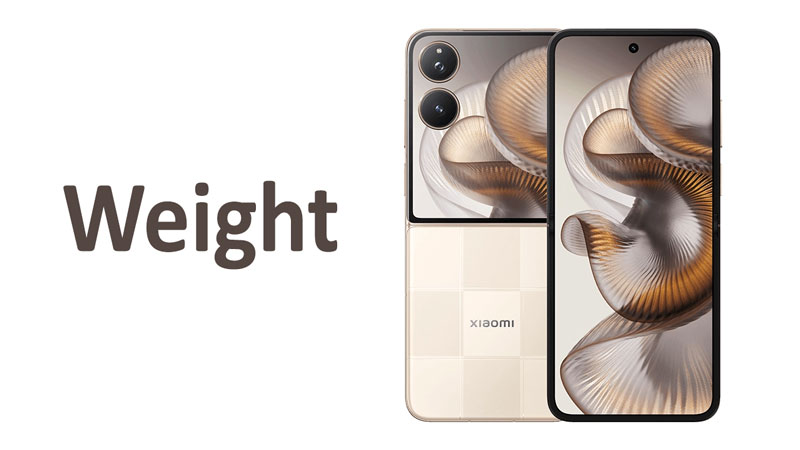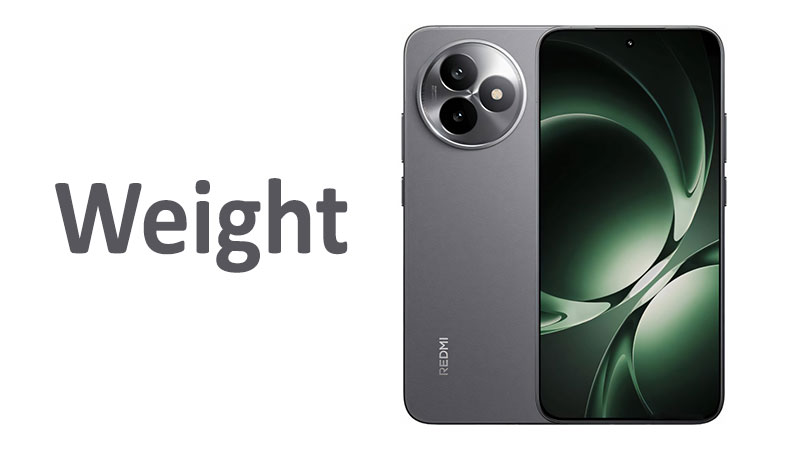The Apple iPhone 15 Plus weight is a defining feature of this large-screen smartphone. This specific metric influences the user’s daily comfort and portability. It represents a careful engineering trade-off. The weight must support a massive display and a long-lasting battery. Understanding the 15 Plus weight is crucial for prospective buyers. This detailed article explores the 201-gram mass in depth. It offers specialized comparisons to other devices. We analyze the ergonomics and material science behind this figure. This ensures readers can make a fully informed purchasing decision.
The Core Specification: 201g (7.09 oz)
The official mass of the Apple iPhone 15 Plus is exactly 201 grams. This weight places the device in the heavier, large-screen category. It clearly signals a focus on endurance and screen real estate. The 201g weight is calculated to offer a premium, solid feel. However, it successfully avoids the bulk of the Pro Max models.
Deconstructing the 201-Gram Measurement
The 201g figure is substantial for a non-Pro iPhone. This mass is a necessary result of its internal components. It accommodates the large battery that powers the extended display. It also includes the advanced camera system and cooling hardware. Keeping the weight just over 200 grams is a major design priority. This avoids the phone feeling excessively heavy during use.
The 201g weight confirms the phone is robustly built. It contributes to the overall perceived quality of the device. This specific mass is the hallmark of the iPhone Plus series.
The Imperial Equivalent: 7.09 Ounces
For users accustomed to imperial units, the weight is 7.09 ounces. This measurement confirms the phone’s sturdy presence. Devices that approach or exceed 8 ounces often feel cumbersome. The 7.09 oz mass avoids this common complaint effectively.
This weight is easy to manage during daily activities. It ensures the phone sits comfortably and securely in the hand. The 7.09 oz iPhone 15 Plus strikes an excellent balance. It offers powerful features without excessive physical burden.
Weight Distribution and Balance
Total weight is only part of the ergonomic story. Weight distribution is equally important for the iPhone 15 Plus. Apple engineers meticulously distribute the 201g mass. They ensure the weight feels balanced across the device’s frame. This balance minimizes the feeling of being top-heavy or bottom-heavy.
A well-balanced 201g phone feels lighter than its actual mass. This careful distribution reduces muscle strain during extended one-handed use. Superior balance is critical for handling a large-screen device. It enhances the overall comfort and usability.
Engineering and Material Science of 201g
The precise 201g mass is a direct outcome of Apple’s material choices. These decisions govern the structure and cost of the iPhone 15 Plus. The weight reflects the necessary compromises of a non-Pro device.
The Aluminum Chassis Contribution
The iPhone 15 Plus utilizes an aerospace-grade aluminum enclosure. Aluminum is significantly lighter than the stainless steel used in Pro models. This material choice is key to keeping the weight at 201g. Using aluminum allows Apple to incorporate a larger battery. They can still maintain a manageable overall device mass.
Aluminum provides excellent durability and structural integrity. It is also a major factor in the phone’s slightly lower price point. This material science decision defines the 201g specification.
Battery Mass and Endurance
The large capacity battery is the heaviest single component. The iPhone 15 Plus battery offers exceptional, class-leading endurance. This capability is a core selling point of the Plus model. The battery’s mass is a primary contributor to the 201g final weight.
Apple prioritizes battery life heavily in the Plus line. This means they intentionally accept a higher mass threshold. The extra grams translate directly into hours of additional screen time. Users accept the 201g mass for this outstanding battery performance.
The Role of Glass and Display
The large 6.7-inch display adds significant mass to the device. Apple uses its durable Ceramic Shield glass technology. This robust protective layer contributes to the 201g mass. The size of the panel itself requires more glass and internal components.
Despite the large screen, the phone manages to stay at 201g. This is achieved through highly efficient internal component layout. The screen size sets a floor for the device’s total mass.
Specialized Comparisons: iPhone 15 Plus vs. Apple Lineup
Comparing the 201g iPhone 15 Plus to its siblings clarifies its market position. The weight difference is a major factor in model selection.
iPhone 15 Plus (201g) vs. iPhone 15 (Standard)
The standard iPhone 15 is substantially lighter than the Plus model. It typically weighs around 171 grams. This creates a noticeable 30-gram weight difference between the devices. The standard model prioritizes ultimate portability and compact handling.
The iPhone 15 Plus uses those 30 extra grams for a larger screen and a bigger battery. The 201g mass delivers superior media consumption capabilities and endurance. Buyers must choose between the portability of the 171g standard model. They can instead select the battery life and size of the 201g Plus.
iPhone 15 Plus (201g) vs. iPhone 15 Pro Max (Heavier)
The iPhone 15 Pro Max is the heaviest model in the lineup. It often weighs around 221 grams or slightly more. The Pro Max features a titanium frame and a complex, heavy camera array. These premium components significantly increase its mass.
The 201g iPhone 15 Plus is approximately 20 grams lighter than the Pro Max. This makes the Plus model much easier to manage throughout the day. The 201g weight is the preferred choice for those wanting a large screen. They can avoid the significant bulk of the Pro Max version.
iPhone 15 Plus (201g) vs. iPhone 14 Plus (Predecessor)
The iPhone 15 Plus weight shows Apple’s commitment to maintaining balance. The predecessor, the iPhone 14 Plus, had a very similar mass specification. Small changes in internal component weight may exist. However, the overarching goal is consistency in the Plus line’s weight.
This consistency benefits users who upgrade frequently. It ensures the phone’s ergonomic feel and pocketability remain familiar. The 201g weight is the established benchmark for the Plus form factor.
Specialized Comparisons: iPhone 15 Plus vs. Competitors
The 201g iPhone 15 Plus mass places it in direct competition with key rival devices. This comparison highlights its status in the large-screen smartphone market.
iPhone 15 Plus vs. Samsung Galaxy S Plus Models
The Samsung Galaxy S Plus models often target a slightly lower weight. For example, the Samsung Galaxy S25 Plus might aim for 190 grams. This is approximately 11 grams lighter than the 201g iPhone 15 Plus. This difference is primarily due to material choice. Samsung often uses lighter Armor Aluminum, while the iPhone 15 Plus still uses thicker glass panels.
The iPhone’s heavier 201g mass is often associated with its superior battery life. It is a calculated trade-off for endurance. Consumers choose between the lighter feel of the Android rivals and the better battery of the 201g iPhone.
iPhone 15 Plus vs. Affordable Flagships (FE/A-Series)
Affordable flagship models, like the Samsung FE series, also compete on screen size. However, they may weigh around 190 grams. They use plastic back panels to save both weight and cost. The 201g iPhone 15 Plus, with its glass back, feels heavier but more premium.
The iPhone’s 201g mass reflects its superior material construction. It offers a more durable, higher-quality tactile experience. This weight difference is a key sign of the iPhone’s build quality advantage.
Defining the Heavy-End Standard Phone
The 201g iPhone 15 Plus defines the limit for a standard (non-Pro) device. It offers flagship performance and features without the cost of the Pro materials. Its mass sets it apart from lighter devices focused on portability. This weight establishes it as a robust, enduring choice.
The 201g mass is a significant figure in this competitive landscape. It ensures the iPhone 15 Plus is taken seriously as a top-tier media consumption device. This weight is a testament to its internal power.
Ergonomics and Daily Usage of 201g
The overall feel of the iPhone 15 Plus is dictated by its 201g mass. This weight impacts usability during all types of daily interactions.
Two-Handed Comfort and Stability
The 201g mass is perfectly suited for two-handed use. This is the primary way users interact with a large 6.7-inch screen. The weight provides excellent stability during intensive tasks like gaming. The phone feels secure and manageable in both hands.
A slight heft, like 201g, minimizes accidental shaking during photography. It helps users maintain a steady grip while recording video. This enhanced stability is a major benefit of the phone’s mass.
Pocketability and Portability Check
The 201g mass is acceptable for daily carrying. It is light enough for easy pocketing in most jackets and jeans. However, it is heavier than compact phones. Users should expect a noticeable presence in tighter or shallow pockets.
The 7.09 oz mass requires sufficient pocket strength to prevent sagging. This mass confirms the phone is substantial, not featherlight. It maintains good portability despite the large screen.
Impact on Extended Media Consumption
Users of the Plus model consume significant media content. They watch movies, read long articles, and browse extensively. The 201g mass is crucial for comfortable extended use. Holding a heavier device for long periods causes wrist fatigue.
The iPhone 15 Plus minimizes this discomfort effectively. It achieves this by carefully balancing its 201g mass. This allows for enjoyable and sustainable viewing experiences. The weight supports the phone’s core function as a portable media hub.
The Feel of the Rounded Edges
The 201g weight is paired with slightly rounded edges on the chassis. This design change improves grip comfort significantly. The phone feels less sharp in the hand compared to previous designs. The rounded edges make the 201g mass feel more manageable. This enhances the overall tactile experience of the device.
Pros and Cons of the 201g Weight
The 201g mass of the iPhone 15 Plus brings distinct advantages and specific disadvantages. Buyers should consider these implications carefully before purchase.
The Advantages of the 201g Mass
The 201g weight translates directly into a massive battery capacity. This provides outstanding, class-leading battery life for the user. The weight contributes to a premium, durable, and solid feel. It provides structural rigidity against bending and twisting forces. The heft enhances the quality and feedback of the internal haptic engine. This results in satisfying vibrations and notifications.
Furthermore, the mass stabilizes the phone for better photography and videography. This makes the phone feel professional and dependable.
The Disadvantages of Increased Mass
The 201g mass is noticeably heavier than the standard iPhone 15. This increased weight can be challenging for users with smaller hands. They may struggle with continuous one-handed operation. The phone is also heavier than many Android competitors in the same class.
Adding a heavy-duty protective case is a concern. A rugged case can push the total carried weight well past 240 grams. This negates the engineered balance of the 201g phone. Users must consider lighter cases to maintain portability.
The Intentional Trade-Off
The 201g Apple iPhone 15 Plus weight represents an intentional trade-off. The user gains maximum battery life and a huge display. They accept a mass slightly higher than the lightest flagships. This balance is optimal for the battery-conscious consumer.
The Plus model is designed for users who prioritize performance and endurance. They accept the 201g weight as a necessary component of that power.
Buyer’s Guide: What the Weight Means
For potential buyers, the 201g weight is a crucial factor in the purchasing decision. It dictates suitability for specific lifestyle needs.
Case Selection and Mass Management
Buyers must carefully select their accessories. They need to manage the total carried mass effectively. A thin, transparent case adds minimal weight, around 15 to 25 grams. This keeps the total mass around 220 grams, which is still manageable. Heavy-duty cases can add 40 to 60 grams quickly.
Users who value the phone’s portability should choose slim, minimalist cases. They must ensure the case complements the phone’s 201g engineered mass. This preserves the phone’s ergonomic feel.
Perception of Quality and Durability
The 201g weight strongly signals premium quality and durability. The phone feels dense and reassuringly solid in the hand. This mass suggests a robust internal structure. Buyers can trust the phone’s ability to withstand daily usage demands.
The weight is proof of the high-grade materials used throughout the chassis. This makes the iPhone 15 Plus a reliable and long-lasting investment.
Target Audience for the 201g Plus
The iPhone 15 Plus is ideal for specific types of users. It targets users who rely heavily on battery life throughout the day. This includes commuters, travelers, and remote workers. They need excellent endurance and a large display for productivity.
They are comfortable with a phone mass that is over 200 grams. This weight is a commitment to performance and endurance. The 201g iPhone 15 Plus is a versatile and dependable device.
The Future Trajectory of iPhone Plus Weight
The 201g iPhone 15 Plus weight suggests a stable future for the Plus category. Apple has found the optimal balance for its aluminum and glass design.
Incremental Refinements
Future Plus models will likely remain close to the 201g benchmark. Any significant weight change would require a material shift. Moving to titanium, for example, could reduce the weight. However, titanium is currently reserved for the premium Pro models.
Future engineering will focus on component minimization. They will strive to add new features without increasing the total mass. The 201g target is likely to remain consistent for the non-Pro large-screen phone.
Innovation in Battery Technology
New battery technology could be the only way to significantly reduce mass. Thinner, higher-density battery cells could be used. This would maintain endurance while cutting down on weight. This innovation would allow Apple to reduce the 201g mass.
For now, the 201g iPhone 15 Plus uses the best available technology. It is the result of optimized engineering choices. This mass is the current gold standard for large-screen battery life.
Final Thoughts and Conclusion
The Apple iPhone 15 Plus weight of 201g (7.09 oz) is a critical feature of the device. It successfully defines the large-screen, battery-focused model. This mass provides superior stability, durability, and endurance. It achieves this without the excessive bulk of the Pro Max model.
For users prioritizing all-day battery life and a massive display, choose the iPhone 15 Plus. The 201g weight is a direct indicator of its best-in-class endurance. It is heavy enough to feel premium. However, it is still manageable for continuous daily use. The 201g iPhone 15 Plus delivers powerful performance in a robust package. This ensures comfort and power merge seamlessly.
Frequently Asked Questions (FAQ)
What is the exact weight of the Apple iPhone 15 Plus?
The Apple iPhone 15 Plus weighs exactly 201 grams. This figure converts to 7.09 ounces.
Why does the iPhone 15 Plus weigh more than the standard iPhone 15?
The 15 Plus is heavier because it includes a much larger screen and a significantly bigger battery.
Does the 201g weight make the phone feel heavy during long calls?
The 201g mass is substantial. However, balanced distribution prevents it from feeling excessively heavy during use.
What material helps keep the iPhone 15 Plus weight at 201g?
The use of lightweight aluminum for the chassis helps maintain the 201g mass.
How does the weight of the iPhone 15 Plus compare to the Pro Max?
The iPhone 15 Plus, at 201g, is noticeably lighter than the Pro Max model, which is typically over 220 grams.



